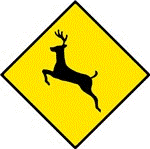United States Department of Agriculture, National Wildlife Research Center: Symposia

Human Conflicts with Wildlife: 2002 Symposium
Date of this Version
August 2000
Abstract
Like a number of gull species, the silver gull Larus novaehollandiae has expanded its population in response to human food subsidy. The major anthropogenic food source is food waste at rubbish tips. Other sources of human food waste are also exploited. Many problems result from the activities of these birds, including human health and safety, economic impacts, and effects on the conservation of other species. My study examines aspects of the economic impacts of the silver gull on the human community of the Greater Melbourne Area comprising approximately 4,065 km2 (1,569 square miles). My data collection method involves identifying sites where problems have been experienced and completing questionnaires during face to faceinterviews with the managers of those sites. Data collected at this early stage of the study demonstrate that there are significant, quantifiable economic impacts associated with the superabundance of the silver gull in this area. Other impacts, such as reduced amenity and potential health hazards are equally real but more difficult to quantify. Costs include damage to structures and products, damage prevention measures, and loss of production. Information about the costs of these problems will be presented to the relevant landfill management authorities to encourage them to consider alternative means of disposing of putrescible waste, rather than by open landfill disposal, because even current best practice management of open landfill sites (rubbish tips) provides ample opportunity for silver gulls and certain other bird species to exploit this food source. Controlling access by the silver gull to food at rubbish tips would be an important first step in managing the population of this species.

